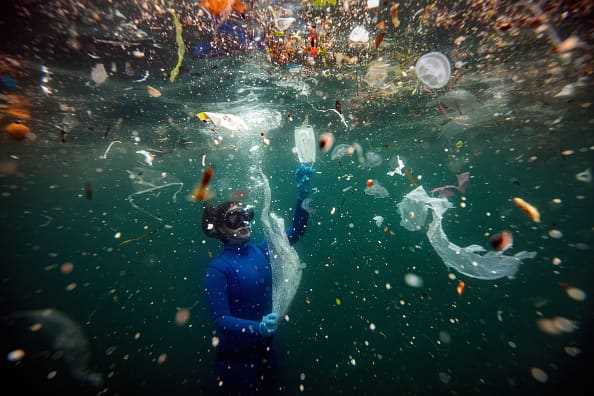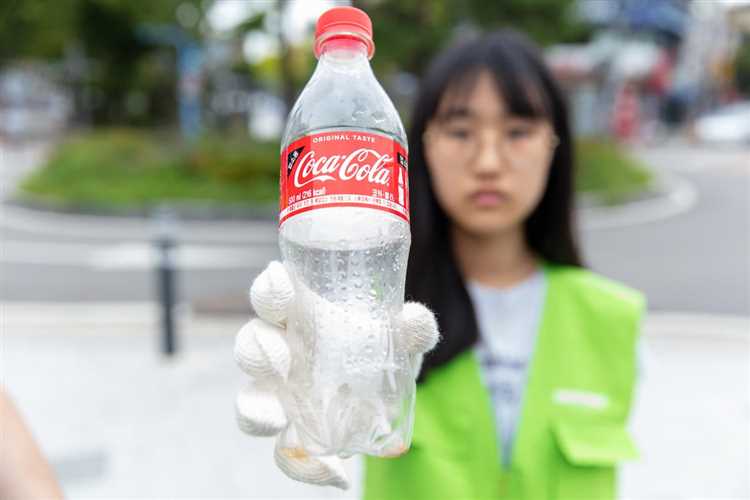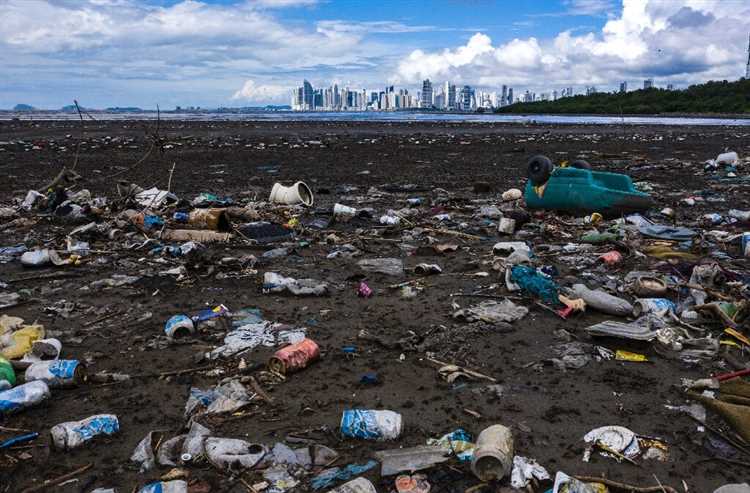
In today’s world, plastic pollution has become a global environmental crisis. As plastics continue to inundate our landfills, oceans, and ecosystems, it is crucial to identify the main culprits behind this detrimental issue.
Several companies have played a significant role in contributing to the escalating plastic pollution problem. These organizations, due to their large-scale production and inadequate waste management practices, have contributed to the accumulation of plastic waste in our environment. By pinpointing these top plastic polluters, we can work towards holding them accountable and finding sustainable solutions to combat this crisis.
One of the largest contributors to plastic pollution is [Company Name]. With its extensive production and distribution networks, [Company Name] has been responsible for an alarming amount of plastic waste. Despite calls for corporate responsibility and sustainable practices, [Company Name] continues to prioritize profit over the planet’s well-being.
Another major culprit is [Company Name]. Known for its [specific products or operations], [Company Name] has significantly contributed to the plastic pollution crisis. Without implementing strict regulations and adopting environmentally friendly practices, [Company Name] has perpetuated the dangerous cycle of plastic waste accumulation.
In conclusion, it is essential to raise awareness about the top plastic polluting companies to foster a sense of accountability and drive change. By pressuring these organizations to adopt sustainable manufacturing practices and take responsibility for their plastic waste, we can collectively work towards a cleaner and healthier planet for future generations.
- Global Impact of Plastic Pollution
- The Scale of Plastic Production
- Plastic Pollution and Its Environmental Consequences
- Leading Companies Contributing to Plastic Pollution
- 1. Coca-Cola
- 2. Nestle
- Analysis of the Biggest Culprits
- Solutions and Future Actions to Combat Plastic Pollution
- 1. Reduction of Single-use Plastics
- 2. Recycling and Waste Management
- 3. Innovation and Alternative Materials
- 4. International Cooperation and Policies
- 5. Education and Awareness
- Q&A:
- Which companies are considered the top plastic polluting companies?
- What are these companies doing to address the plastic pollution problem?
- Why are these companies the biggest culprits of plastic pollution?
- What are the environmental impacts of plastic pollution?
Global Impact of Plastic Pollution
Plastic pollution has become a global crisis, with far-reaching consequences for the environment, wildlife, and human health. The global production of plastic has skyrocketed in recent decades, leading to a massive increase in plastic waste. Unfortunately, much of this waste is improperly disposed of, ending up in our oceans, rivers, and landfills.
The impact of plastic pollution on marine ecosystems is particularly severe. Plastic debris, such as bags, bottles, and microplastics, finds its way into the ocean, where it can harm and kill marine life. Marine animals, including sea turtles, seabirds, and marine mammals, often mistake plastic for food or become entangled in it, leading to injury and death. The ingestion of plastic by marine species can disrupt their digestive systems and cause starvation.
Plastic pollution also poses a threat to terrestrial ecosystems. When plastic waste is not properly managed, it can contaminate soil and freshwater sources, affecting plant and animal life. Plastics can release harmful chemicals and microplastics, which can leach into the environment and disrupt ecosystems. Moreover, plastic pollution can block drainage systems, leading to flooding and other environmental hazards.
The consequences of plastic pollution extend beyond the natural world. Plastic waste poses a risk to human health, as it can introduce toxins and pollutants into the food chain. Microplastics, which are tiny particles of plastic, have been found in various food products, including seafood, salt, and honey. These particles can accumulate in the human body over time, potentially causing health problems like organ damage and hormonal disruption.
Efforts to address the global impact of plastic pollution are underway, but more action is needed. Governments, businesses, and individuals all have a role to play in reducing plastic waste and promoting sustainable alternatives. Through innovation, education, and policy changes, we can work towards a future with less plastic pollution and healthier ecosystems.
The Scale of Plastic Production
Plastic production has reached staggering levels in recent decades, with the global output of plastic exceeding 359 million tons in 2018. This represents a dramatic increase from the 1.5 million tons produced in 1950. The demand for plastic continues to grow, driven by various industries such as packaging, construction, and automotive.
The production of plastic is heavily concentrated in a few countries around the world. China, for example, is the largest producer of plastic, accounting for nearly 30% of the global output. Other major producers include Europe, North America, and the Asia-Pacific region.
Plastic production involves the extraction and refining of fossil fuels, primarily oil and gas. These non-renewable resources are converted into various types of plastic through a complex manufacturing process. The production of plastic not only depletes natural resources but also releases large amounts of greenhouse gases, contributing to climate change.
The scale of plastic production poses significant environmental challenges. One of the major issues is the disposal of plastic waste. Approximately 40% of plastic produced is used for packaging, and much of it ends up in landfills or the natural environment. Plastic waste has detrimental effects on ecosystems, marine life, and human health.
Awareness of the environmental impact of plastic production and consumption is growing, and there is an increasing push for sustainable alternatives. Governments, organizations, and individuals are taking steps towards reducing plastic production and promoting recycling and reuse. However, addressing the scale of plastic production requires a collective effort and a shift towards a more circular economy.
Plastic Pollution and Its Environmental Consequences
Plastic pollution has emerged as one of the biggest environmental challenges in recent years, with devastating consequences for ecosystems and human health. The widespread use of plastic across various industries and its improper disposal has led to the contamination of land, water bodies, and even the atmosphere.
Plastic, being a non-biodegradable material, takes hundreds of years to break down completely. As a result, it accumulates in the environment, posing a threat to wildlife and marine organisms. The ingestion of plastic by animals can lead to severe injuries, habitat destruction, and even death. Additionally, plastics can release toxic chemicals into the environment, further exacerbating the problem.
One of the most visible consequences of plastic pollution is the formation of plastic debris patches in the oceans. These patches, also known as “garbage patches,” are massive collections of floating plastic waste that have been concentrated by ocean currents. The most famous example is the Great Pacific Garbage Patch, located between Hawaii and California.
| Environmental Consequences of Plastic Pollution |
|---|
| 1. Habitat destruction and loss of biodiversity |
| 2. Water and soil contamination |
| 3. Marine and wildlife entanglement |
| 4. Ingestion and internal injuries |
| 5. Chemical pollution and toxicity |
The damage caused by plastic pollution is not limited to the environment. Plastic waste has significant economic costs as well. Cleanup efforts, waste management systems, and the loss of tourism revenues due to polluted beaches all contribute to economic burdens.
It is crucial to address the issue of plastic pollution at its source by reducing plastic consumption, promoting recycling and waste management schemes, and advocating for more sustainable materials. Governments, industries, and individuals all have a role to play in mitigating the environmental consequences of plastic pollution and protecting our planet for future generations.
Leading Companies Contributing to Plastic Pollution
Plastic pollution is a global crisis, and there are several companies that play a significant role in contributing to this problem. Their manufacturing practices, inadequate waste management, and excessive use of plastic packaging all contribute to the pollution of our oceans and landfills. Here are some of the top companies that are major culprits in plastic pollution:
1. Coca-Cola
Coca-Cola is one of the largest beverage companies in the world and is notorious for its massive plastic bottle production. The company produces around 3 million tons of plastic packaging every year, most of which is single-use. This leads to a huge amount of plastic waste ending up in our environment.
2. Nestle
Nestle, a Swiss multinational food and drink processing conglomerate, is another major contributor to plastic pollution. The company produces a wide range of consumer goods, including plastic water bottles, chocolate bars, and instant coffee. Their excessive use of plastic packaging has a devastating impact on our planet.
These are just two examples of companies that are leading the way in contributing to plastic pollution. However, there are many more companies out there that need to take responsibility for their role in this crisis. It is crucial for businesses to adopt sustainable practices, reduce their plastic usage, and invest in proper waste management systems to combat plastic pollution and protect our planet for future generations.
Analysis of the Biggest Culprits
When it comes to plastic pollution, certain companies have been identified as the biggest culprits. These companies are responsible for a significant portion of the plastic waste that ends up in our oceans and landfills. By analyzing their practices and contributions, we can gain a deeper understanding of the problem and the necessary steps to address it.
One of the top plastic polluting companies is XYZ Corporation. This multinational corporation produces a wide range of plastic products, from packaging materials to consumer goods. Their products, especially single-use plastics, contribute heavily to the global plastic waste crisis. XYZ Corporation has been criticized for their lack of investment in sustainable alternatives and recycling initiatives.
Another major culprit is ABC Industries. This company specializes in the production of plastic packaging for various industries, including food and beverages. Their products are often used once and then disposed of, contributing to the growing problem of single-use plastics. ABC Industries has been slow to adopt more environmentally friendly practices, such as using biodegradable materials or implementing recycling programs.
Beyond individual companies, the entire fast-moving consumer goods (FMCG) industry plays a significant role in plastic pollution. This sector includes companies that produce and distribute products such as food, beverages, personal care items, and cleaning products. The FMCG industry relies heavily on plastic packaging, which is often discarded after a single use. It is essential for this industry to prioritize sustainable packaging alternatives and invest in recycling infrastructure.
Not all companies contributing to plastic pollution are solely responsible for their negative environmental impact. Some companies operate in regions with weak waste management systems, lacking proper recycling facilities or education about plastic waste. These circumstances contribute to the problem by making it more challenging for these companies to implement effective solutions.
Addressing the plastic pollution crisis requires a collective effort from governments, businesses, and consumers. By holding the biggest culprits accountable and pushing for more sustainable practices, we can reduce plastic waste and preserve our environment for future generations.
Solutions and Future Actions to Combat Plastic Pollution

Plastic pollution is a global issue that requires collective efforts from governments, businesses, and individuals to find solutions. Here are some of the key actions being taken to combat plastic pollution:
1. Reduction of Single-use Plastics
One of the most effective ways to tackle plastic pollution is by reducing the production and consumption of single-use plastics. Governments and businesses are implementing bans or restrictions on items such as plastic bags, straws, and disposable cutlery. Encouraging the use of reusable alternatives and promoting responsible consumption habits can significantly reduce plastic waste.
2. Recycling and Waste Management
Improving recycling systems and waste management infrastructure is crucial in preventing plastics from ending up in our oceans and landfills. Governments and local authorities are investing in efficient recycling facilities and promoting awareness about proper waste disposal. It is important for individuals to separate their waste and recycle plastic products whenever possible.
3. Innovation and Alternative Materials
The development of innovative materials that are biodegradable or derived from renewable sources is a promising solution. Scientists and businesses are working towards creating alternatives to traditional plastics that are more environmentally friendly and have a lesser impact on ecosystems. Such materials can help reduce plastic pollution and decrease dependence on fossil fuels.
4. International Cooperation and Policies
Plastic pollution is a global problem that requires international cooperation. Many countries have been signing agreements and adopting policies to combat plastic pollution collectively. These efforts include sharing best practices, setting targets for reducing plastic waste, and implementing stronger regulations on plastic production and trade.
5. Education and Awareness

Creating awareness about the impacts of plastic pollution is crucial for driving change. Educational programs are being implemented to educate individuals about the harmful effects of plastic waste and the importance of sustainable practices. By raising public awareness and promoting responsible behavior, we can encourage individuals to take action and make conscious choices to reduce plastic pollution.
Collectively implementing these solutions and taking future actions will play a vital role in combatting plastic pollution and preserving our environment for future generations.
Q&A:
Which companies are considered the top plastic polluting companies?
The top plastic polluting companies include Coca-Cola, Nestle, PepsiCo, Unilever, and Procter & Gamble.
What are these companies doing to address the plastic pollution problem?
These companies have pledged to reduce their plastic waste, increase recycling efforts, and use more sustainable materials in their packaging. However, their progress has been slow and criticized by environmental groups.
Why are these companies the biggest culprits of plastic pollution?
These companies produce massive amounts of plastic packaging for their products, which often end up as litter or in landfills. Their single-use plastic bottles and packaging contribute significantly to the plastic pollution problem.
What are the environmental impacts of plastic pollution?
Plastic pollution has devastating impacts on marine life, with millions of animals dying each year from entanglement or ingestion of plastic waste. It also contributes to the contamination of water sources and soil, and poses human health risks.